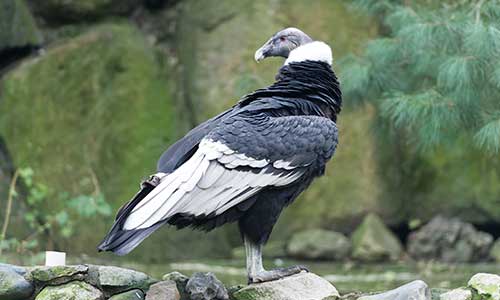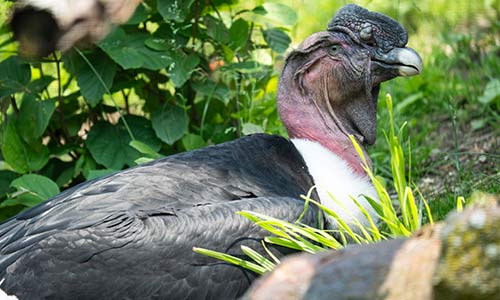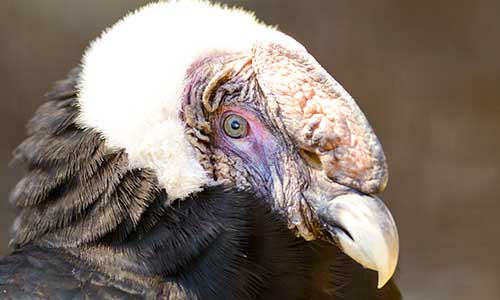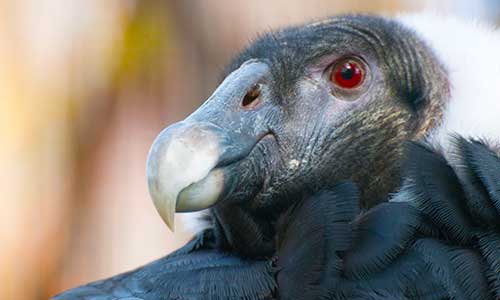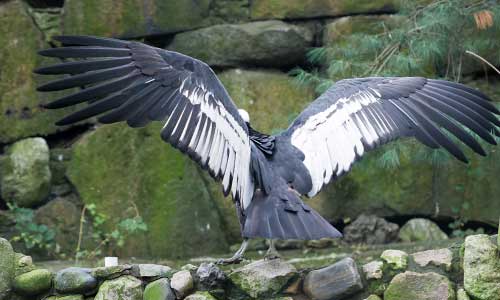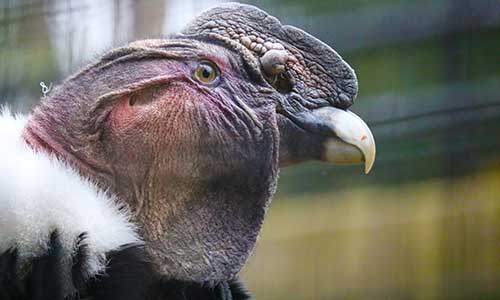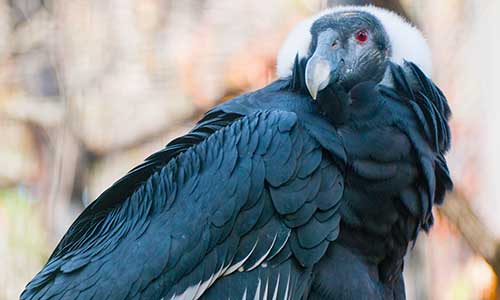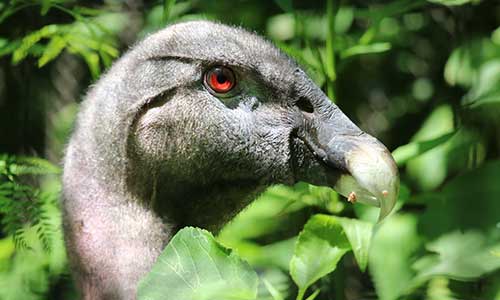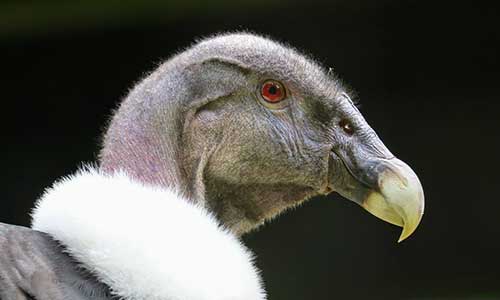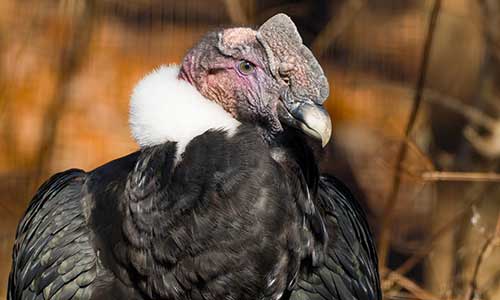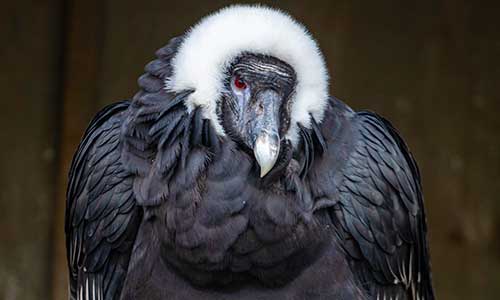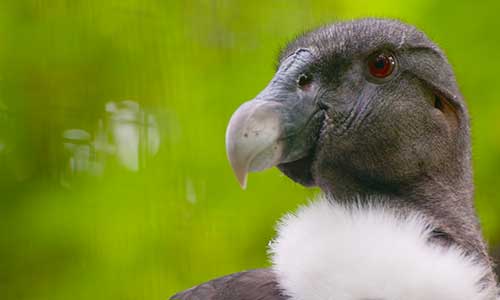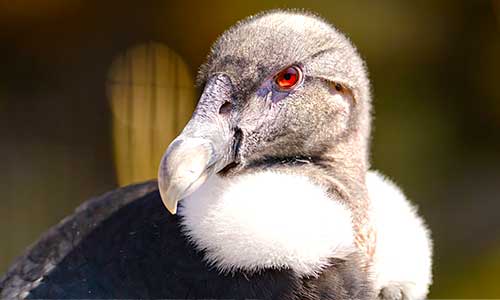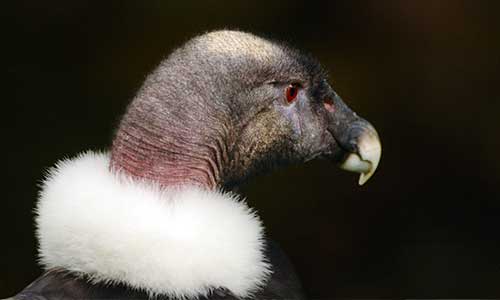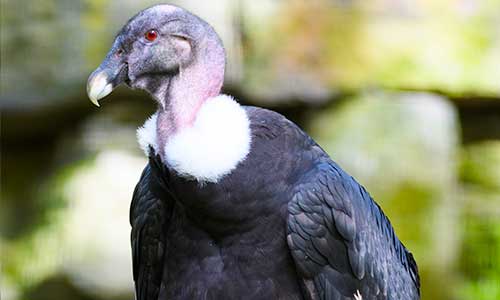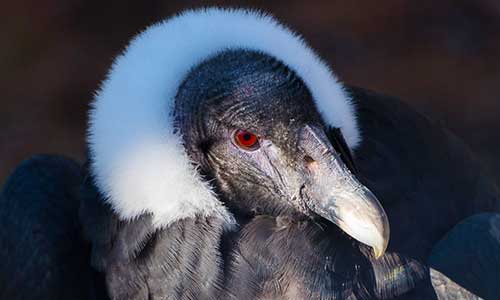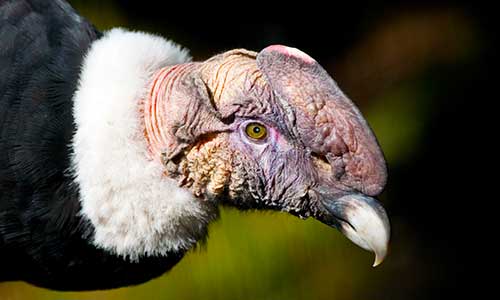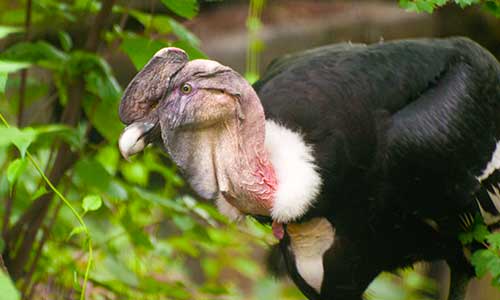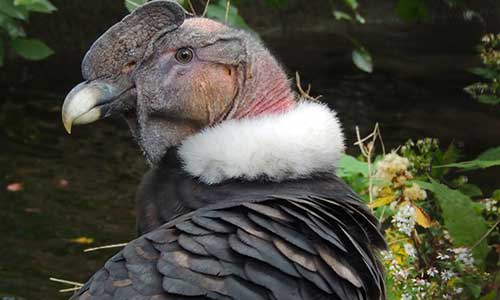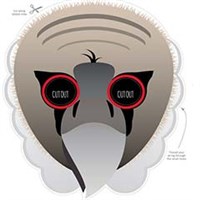Andean Condor
Vultur gryphus
About the Andean Condor
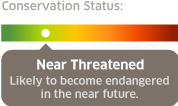
Geographic Range:
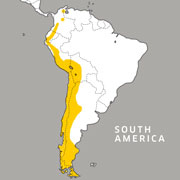
Class: Aves
Order: Falconiformes
Family: Cathartidae
Genus: Vultur
Species: gryphus
The Andean condor has a bald head that will flush (become red) as an emotional response, especially during courting and mating rituals. The male has a comb on the head and a wattled neck. The condor has a hollow bone structure that helps in flight; it can soar as high as 18,000 feet in the air.
Committed to Conservation
Zoo New England participates in the Andean condor Species Survival Plan. By sharing research and knowledge, participating institutions work together to establish guidelines that best ensure the health of captive populations, and with success, the survival of endangered species.
Andean Condor Facts
Appearance:
Andean condors have black feathers with patches or bands of white feathers on their wings, white or gray legs and feet (built for walking rather than grasping), and bald heads. Having a bald head keeps the condor clean while feeding on carrion. They have a white scruff around their necks, which keeps them warm in cold weather. The male condor has a comb on his head, a neck wattle, and yellow or brown eyes. Females have red eyes. Condors’ white hooked beaks are built for ripping and tearing carrion.
A condor’s wingspan is approximately 10 feet. On average, the Andean condor is 5 cm shorter from beak to tail than the California condor. Andean condors have a hollow bone structure, which keeps them lightweight for faster flight.
Size:
Males are larger than females.
Males: 46 to 53” long, 24 to 33 pounds
Females: 46 to 53” long, 17 to 24 pounds
Diet:
Carrion (carcasses of already dead animals). Condors will hunt live prey if they have to, but this is very rare. They often spot carrion by watching for other scavenger birds. Andean condors can go without eating for several days, after which they may gorge on several pounds of food, even to the point of not being able to lift off the ground.
Reproduction:
Andean condors are sexually mature at 6 to 8 years. These birds mate for life, and they only breed every other year. They perform in-flight courtship, during which the male spreads his wings, curls his head down, and turns himself from side to side.
Condors roost and breed at 10,000 to 16,000 feet during the July breeding season. They lay one egg, which weighs approximately 10 ounces and is between 3 and 4 inches in length. The egg is incubated for up to 58 days. Young condors can’t fly until they are 6 months of age. Juveniles stay with their parents for several months, usually until a new clutch is born.
Behavior:
Andean condors can fly up to 18,000 feet in the air. These birds have no voice box, so they’re silent except for hissing sounds.
Role in their habitat:
Scavenger
Habitat/range:
Andean condors are found on the west coast of South America in the Andes Mountains. These birds prefer grasslands and alpine areas of the high mountains, but they’ll also forage for food in lowland deserts and coastlines.
Median Life Expectancy:
46.7 years
You Can Find This Animal in the Raptor Ridge
A Considerable Condor
The Andean condor is one of the largest and heaviest flying birds. It has a wing span of ten to 12 feet, and weighs between 18 and 25 pounds.
Just for Kids!
You might also like
At Franklin Park Zoo:
At Stone Zoo:

